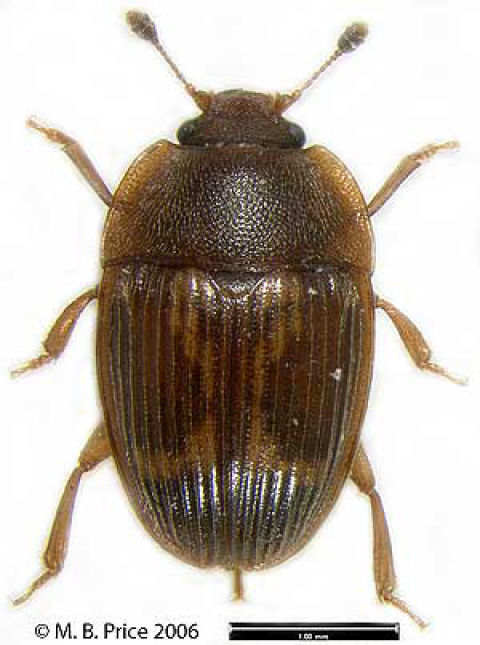talking plants

Figure 1. Strawberry sap beetle (Stelidota geminata)
Sap beetles, also referred to as picnic beetles, are a common pest in home gardens. Over 180 species of sap beetles exist, although the most common to Minnesota gardens are the strawberry sap beetle (Fig. 1), picnic beetle (Fig. 2), and the dusky sap beetle (Fig. 3).
Sap beetles are generally small, between 1/8-1/4 inch long, with an oval body that is dark colored, and have a club or knob at the end of the antennae. They are attracted to fermenting smells and are commonly found on tomato, sweet corn, raspberry, strawberry, and muskmelon that are damaged, overripe, or rotting. Sap beetles are usually just a nuisance, although they can directly injure fruits and vegetables. In the paragraphs to follow, University of Minnesota Extension Entomologist (retired), Jeffrey Hahn talks about management options for gardeners.
The best management for sap beetles is to pick fruits and vegetables regularly as they ripen and remove any damaged or overripe produce in your garden and dispose of by burying or bagging them. This helps eliminate smells that could attract them to your garden. However, once sap beetles find your garden, they can be challenging to eliminate.
Insecticides, such as carbaryl and bifenthrin, can kill sap beetles and reduce their numbers. However, the challenge is that there is an interval of time between when a product is applied and when the fruits or vegetables can be safely harvested. You can find this information by looking for the Days to Wait to Harvest number on the pesticide label.
Depending on the product, this can take days or even weeks. By then the sap beetles have likely returned. If that is the case, try to use a product with as short of a time interval as possible. More information on sap beetles can be found at http://z.umn.edu/sapbeetle
If you have questions about sap beetles in your garden please call me at the University of Minnesota Extension office, Clay County at 218-299-7338 or by email nels1657@umn.edu. Check out our website at https://local.extension.umn.edu/local/clay

